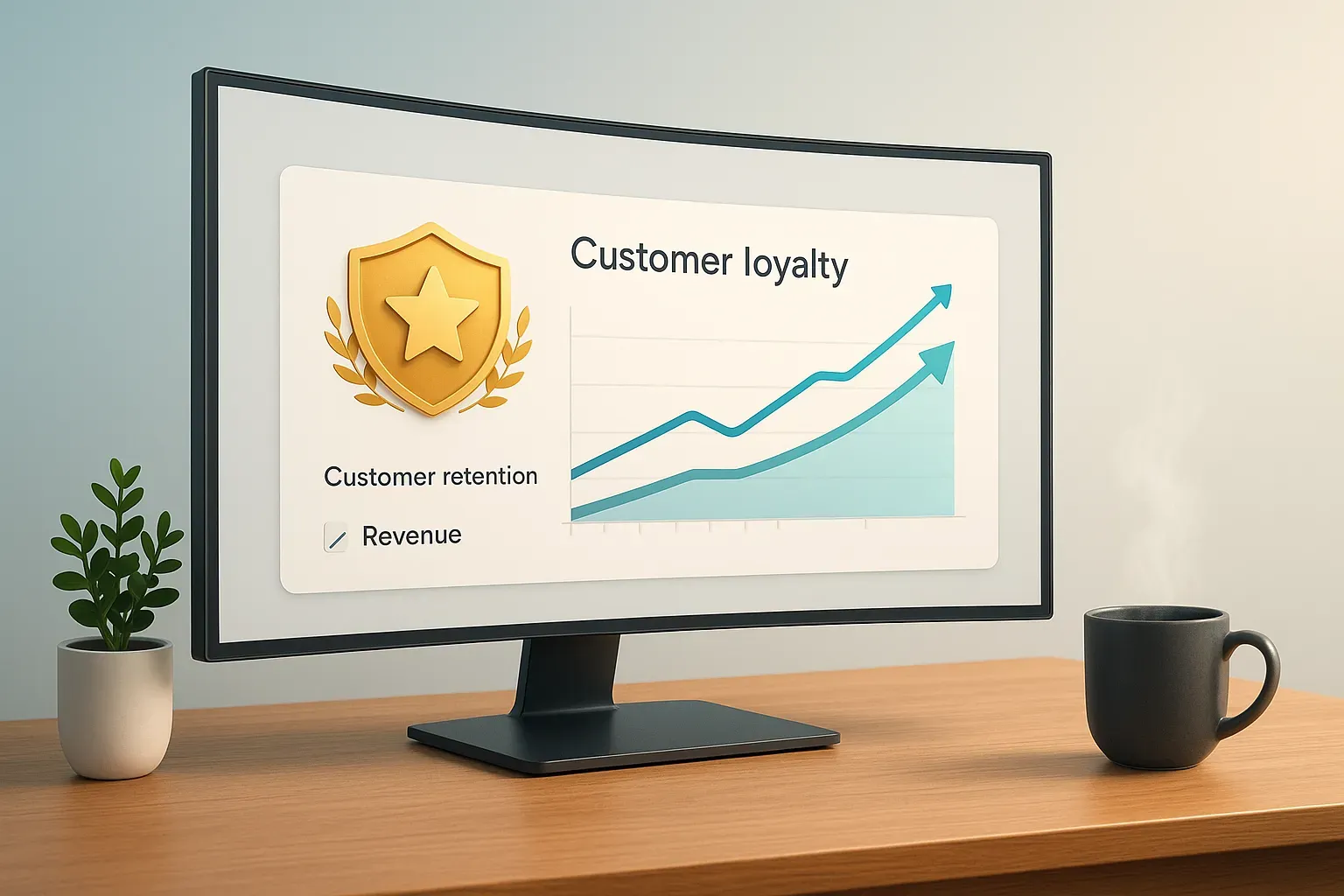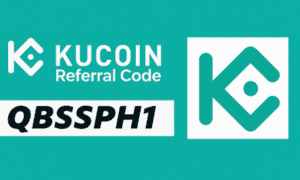Customer Retention Tactics That Boost Revenue: 18 Expert Lessons
Leading industry experts share proven customer retention strategies that directly impact revenue growth in today’s competitive market. This practical guide offers eighteen actionable tactics that businesses of any size can implement to strengthen client relationships and increase profitability. From real-time response systems to structured feedback loops, these evidence-based approaches transform standard customer interactions into valuable long-term partnerships.
- Customer Health Scoring Enables Proactive Intervention
- Quarterly Strategy Reviews Transform Vendor Relationships
- Real Human Response to Financial Concerns
- Focused Retargeting Drives Massive Revenue Growth
- Personalized Onboarding Workflows Reduce Early Churn
- Dedicated Project Leads Strengthen Client Trust
- Close the Feedback Loop Between Departments
- Analytics Reports Capture Dissatisfaction Early
- Tell the Truth Faster About Campaign Results
- Turn Client Feedback Into Public Content
- Shift From Projects to Growth Partnerships
- Structured Post-Engagement Check-ins Build Lasting Partnerships
- Set Modest Expectations Then Exceed Them
- Custom Curation Boosts Jewelry Brand Returns
- Act Quickly on Customer Feedback
- Respond to Support Messages Within Minutes
- Personalized Follow-up Program Boosts Renewal Rates
- Reach Out Before Problems Arise
Customer Health Scoring Enables Proactive Intervention
One customer retention tactic that significantly impacted our revenue growth was the implementation of a Customer Health Scoring System across all enterprise accounts. Instead of relying solely on satisfaction surveys, we built a composite score using metrics like:
-
Engagement frequency
-
Escalation patterns
-
NPS trends
-
Linguistic sentiment from support interactions
When a client’s score dipped below a threshold, our CX Success team intervened with proactive solution workshops with personalized sessions where we co-created process improvements with the client. This data-driven empathy helped us recover at-risk partnerships and uncover upselling opportunities.
Within a year, our retention improved significantly, and client expansion revenue rose notably, proving that early intervention builds both trust and profitability.
And from this tactic, we learned a key lesson: retention isn’t about reacting to churn; it’s about forecasting satisfaction. Additionally, when you combine predictive analytics with human-led engagement, you move from being a vendor to becoming an indispensable growth partner.

Quarterly Strategy Reviews Transform Vendor Relationships
One customer retention tactic that had a major impact on our revenue growth was implementing proactive quarterly strategy reviews with every client. Early on, we noticed that clients often churned not because of poor results, but because they didn’t fully understand the value we were delivering or how our work aligned with their long-term goals.
We started scheduling dedicated 30-45 minute sessions every quarter to review their goals, performance metrics, and upcoming opportunities. These meetings weren’t just reports — they were collaborative strategy sessions where we discussed next steps, identified new growth areas, and adjusted campaigns based on real-time insights.
The effect was immediate. Clients felt more informed, more heard, and more confident that X Agency was a true partner in their growth, not just a vendor executing tasks. Retention improved significantly, and because our clients stayed longer and often expanded their scope, it directly boosted recurring revenue.
The key lesson I learned: retention isn’t just about avoiding churn — it’s about deepening relationships and demonstrating continuous value. Too often, businesses focus solely on acquiring new clients and neglect the ones they already have. By investing time in meaningful conversations, you can uncover opportunities, preempt concerns, and build loyalty that translates into both stability and growth.
For anyone focused on retention, my advice is simple: don’t just report results — create touchpoints that turn metrics into strategy, and strategy into trust. When clients see you actively shaping their success, they stay, expand, and become your best advocates.

Real Human Response to Financial Concerns
The retention tactic that moved the needle most was surprisingly simple: actually caring when things go wrong. We deal with people’s money, which means every issue feels like a crisis to them. And honestly? It should. We stopped treating support tickets like problems to close and started treating them like scared humans who needed help. When someone’s transaction doesn’t go through, their account looks wrong, or they simply don’t understand how something works, they’re not just annoyed. They’re panicking.
We made sure every single person gets a real human response in minutes, someone who gets both the tech side and the fact that this person is genuinely stressed. Here’s what surprised us: customers who had problems but got great support stuck around longer than people who never needed help. We noticed a significant improvement in retention rates. As I see it, how you show up when things break matters way more than never breaking.

Focused Retargeting Drives Massive Revenue Growth
One of our biggest wins came from a retention play we ran for Switch Suspension, an auto parts brand that was bleeding traffic and seeing weak sales. Instead of chasing new customers, we doubled down on retargeting the ones who’d already shown interest.
We built laser-focused audiences, dialed in the creative, and hit people with messaging that reminded them exactly why they were on that site in the first place. Within weeks, their numbers went through the roof:
-
144% revenue growth
-
48x ROAS on retargeting
-
24% lift in website conversions
I’m a firm believer that retention isn’t just about loyalty programs or discounts but also about timing. You catch people when they’re ready to buy, not when you’re ready to sell.

Personalized Onboarding Workflows Reduce Early Churn
One of the most impactful customer retention tactics we implemented was building personalized onboarding workflows that align directly with each client’s accounting setup and payment processes. Rather than offering a one-size-fits-all experience, our team guided customers through a tailored setup that showed immediate value — connecting their Xero or MYOB accounts, automating payables, and helping them start earning rewards on business expenses within days. This approach significantly improved adoption rates and reduced early churn, ultimately driving consistent revenue growth through higher lifetime value per customer.
The key lesson we learned is that retention starts long before renewal — it begins at the moment of first interaction. By investing time in understanding each client’s financial workflow and proactively demonstrating how automation directly saves time and enhances cash flow, we turned onboarding into a strategic retention tool. This not only strengthened relationships but also built long-term trust, leading to higher referral rates and organic expansion within our customer base.

Dedicated Project Leads Strengthen Client Trust
One of the most effective retention tactics we implemented was assigning dedicated project leads to our long-term clients — not account managers, but people directly involved in the operational side of delivery. This small structural change created a clear communication line between our clients and the teams actually annotating or processing their data. It led to faster feedback loops, fewer misunderstandings, and a stronger sense of partnership.
Within a few months, client renewal rates rose noticeably, and our revenue growth stabilized around existing accounts rather than depending solely on new ones.
The key lesson for me was that retention isn’t about loyalty programs or discounts — it’s about trust through consistency. Clients stay when they feel their needs are deeply understood and predictably met. At Tinkogroup, a data services company I founded in 2015, that meant embedding accountability directly into the delivery process, not just the customer relationship layer.

Close the Feedback Loop Between Departments
Our biggest retention unlock wasn’t a discount or feature; it was closing the feedback loop between finance and product. Every time a customer downgraded or churned, our system triggered an internal review: finance tagged the reason, product saw the data, and within 24 hours, someone reached out with an actual solution, not a “sorry to see you go” email.
That one process cut churn by double digits. The lesson? Retention isn’t about more touchpoints; it’s about faster ones. When you treat feedback like a transaction, not a postmortem, customers feel heard before they leave.

Analytics Reports Capture Dissatisfaction Early
We implemented a daily and monthly workflow analytics report that dove deep into our services’ productivity with the client. Our original motivation was to simply have a record of deliverables achieved in case of contract disputes. What it turned into was a fully-fledged data analytics report framework that had the unintended consequence of our clients having a heightened engagement with our service and a 50% increase in customer retention.
What happened was that clients wouldn’t tell us if they were not happy with our service and then would cancel their agreements with us. After our basic analytics came out, we noted that clients would express their dissatisfaction sooner. We could then speak to them, provide them with isolated support, and develop a month-to-month performance report on how we’ve improved.
It became crucial to us that providing regular reporting was the easiest and fastest way that a client could express their dissatisfaction. We could arrange a call for the next day and alleviate their concerns as soon as possible.
What I learned is that people love to profess their dissatisfaction more so than their love for us. And that’s okay; that’s human nature. So if you can find a way to capture a client’s dissatisfaction as early as possible, you are much more likely to retain that client.
And that’s exactly what we did, with results of a 50% improvement in customer retention.

Tell the Truth Faster About Campaign Results
The biggest jump in our retention came from something ridiculously simple. We just started telling the truth faster. If a campaign bombed, we didn’t sugarcoat it or hide behind data slides. We’d hop on a call, own it, and show the plan to fix it. Clients loved it. That’s when we also learned that people don’t leave over mistakes. They leave when you act like nothing’s wrong. That shift turned us from “the agency that runs ads” into partners they actually trusted. Transparency doesn’t just keep customers but keeps your sanity, too.

Turn Client Feedback Into Public Content
One of the most effective tactics we’ve used is turning client feedback into content and addressing every concern publicly. We’ve learned that customer retention doesn’t always come from big strategies; sometimes it’s about doing the simple things right. Here’s how it plays out:
The problem: The same questions kept showing up in support — things like “How do I automate investor reports?” or “Where do I find performance analytics?”
The fix: Instead of replying to each ticket, we turned those questions into short explainer videos and email walkthroughs. One two-minute guide on investor reporting alone cut repeat tickets by nearly 60% in a month.
We also found that being prompt and transparent works far better than taking days to craft the perfect fix. Quick, honest communication beats radio silence every time.
At the core, it all comes down to being quick, clear, and present when your customers need you. It’s not fancy, but it’s the kind of consistency that keeps people around for years.

Shift From Projects to Growth Partnerships
One of the best ways we kept customers was to change our focus from delivering projects to growing partnerships. We stopped thinking of a website launch or digital campaign as a one-and-done project and started thinking of it as the start of a process of constant improvement. For context, our team does a performance review after the launch of a website or digital campaign. This is where we check the data on conversions, user behavior, and engagement. So now we’ve incorporated suggestions for optimizations, which often turn into new digital marketing campaigns, better user experience, or a new brand.
When you use this collaboration technique with clients, they are more likely to engage because they see you as someone who really cares about their success. It has immediately led to more repeat business and referrals for us, which is a key part of growing our revenue.

Structured Post-Engagement Check-ins Build Lasting Partnerships
A retention tactic that made a big impact on our revenue was introducing structured check-ins after the initial engagement. Most businesses focus on the sale, but we started treating the weeks after delivery as the real opportunity. We built in short follow-ups to review results, offer insights, and identify what’s next.
It sounds simple, but that consistency turned one-off projects into long-term partnerships. Clients began to see us less as a service provider and more as part of their leadership team, which directly increased retention and referrals.
Retention isn’t about constant selling, it’s about staying invested. When clients feel like you’re thinking about their business even when you’re not on a call, that’s what keeps them coming back.

Set Modest Expectations Then Exceed Them
We found that setting modest expectations and then quietly exceeding them has been one of the most effective ways to keep clients coming back. When results arrive earlier, smoother, or slightly better than promised, it builds trust without any unnecessary hype. Over time, this approach has led not only to strong retention rates but also to a steady flow of referrals and follow-up projects from satisfied clients. The key takeaway is simple: consistency and credibility are worth more than big promises. Clients remember reliability far longer than excitement.

Custom Curation Boosts Jewelry Brand Returns
I was hired by a jewelry brand to help with marketing. One of the main strategies was to increase customer retention and LTV. We began with a detailed survey of the top customers to understand why they buy and why they keep buying. We took this data and integrated it into the messaging. A big takeaway was the desire for more custom curation in promotional materials. We created curated product lists for customers that show products that are most in line with their past purchases. This change led to a 240% increase in returning customers.

Act Quickly on Customer Feedback
Customer feedback is one of the most powerful and cost-effective tools for improving customer retention. It provides direct insight into what motivates and frustrates your customers, allowing you to refine messaging, offers and experiences in a way that drives genuine engagement and loyalty.
The key is to act on feedback quickly. When customers see that their opinions lead to tangible changes — whether that’s new products, improved service, or more personalized rewards — it builds trust and advocacy.
We find that immediate, meaningful responses such as instant gift card rewards or thank-you gestures can be a simple yet highly effective way to acknowledge feedback and reinforce positive behaviors.
Brands that create a continuous feedback loop — collecting insights, rewarding participation, and visibly adapting as a result — are able to turn their customers into co-creators of the brand experience. That not only enhances satisfaction, but directly contributes to repeat business and long-term loyalty.

Respond to Support Messages Within Minutes
We had 100% retention rate for the past year and the most effective way for us to retain customers is to be super responsive. Our goal is to respond to our customers’ questions within 3 minutes of receiving their chat support message. In the age of AI doing everything, providing responsive and real human chat support truly accelerates our B2B SaaS business.

Personalized Follow-up Program Boosts Renewal Rates
We curated a personalized 30-day follow-up program that we now implement after each project. This new business strategy helped us boost our client renewal rate by 25% within three months. Even our customers appreciated the extra efforts we were putting.
All in all, the key lesson we learned from our new strategy is that staying connected with your clients and customers after providing the service is a very important step (especially after the job ends) as it helps you build long-term relationships with your clients.

Reach Out Before Problems Arise
“Always try to check in with customers before they have problems; not after they’re already upset.”
A lot of companies only check in with clients when they get complaints or when clients stop purchasing. That is way too late. More visionary companies will reach out to clients to know how they are doing.
Here are some suggestions to do that:
1- Have a system to get in touch with clients. Every month works. Send a message such as “How is everything working for you? Is there anything we can assist you with?”
2- Get in touch with inactive clients. A simple “We saw that you haven’t placed an order in a while. Is everything okay? Did we do something to upset you?” is okay to ask. A lot of the time, clients will just forget about you or have an issue that is an easy fix that they will not tell you about.
3- Sending clients some appreciation messages is a great way to celebrate their anniversaries with the business, no matter how small. A small gesture will go a long way as some clients will feel highly appreciated.
4- Having a dissatisfied client is not ideal, but when that happens, you have to make a great effort to solve the issue quickly. After a week, check in to see if they are happy with the solution.
5- Ask satisfied consumers what the best thing about the product you offer is. It will give you insight about what to keep doing and help you win back clients who have disengaged with your business.
The key lesson:
Keeping old customers is way cheaper than finding new ones. If someone already trusts you enough to buy once, it is much easier to get them to buy again.
Think of customers like friends. You do not just talk to friends when you need something, you check in regularly to stay connected.

Related Articles
- Customer Retention: 15 Strategies for Building Long-Lasting Relationships – TechBullion
- 20 Customer Retention Lessons of Turning Dissatisfaction into Loyalty
- 17 Pricing Strategies That Boosted Revenue: Business Insights



































